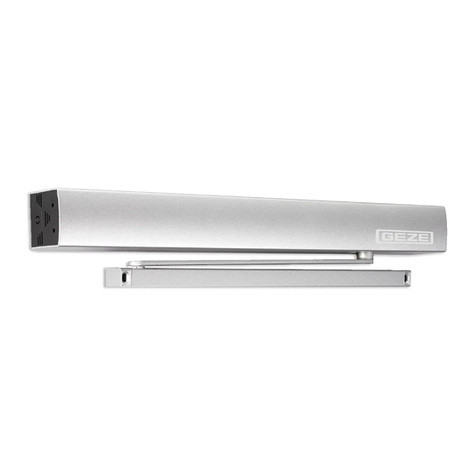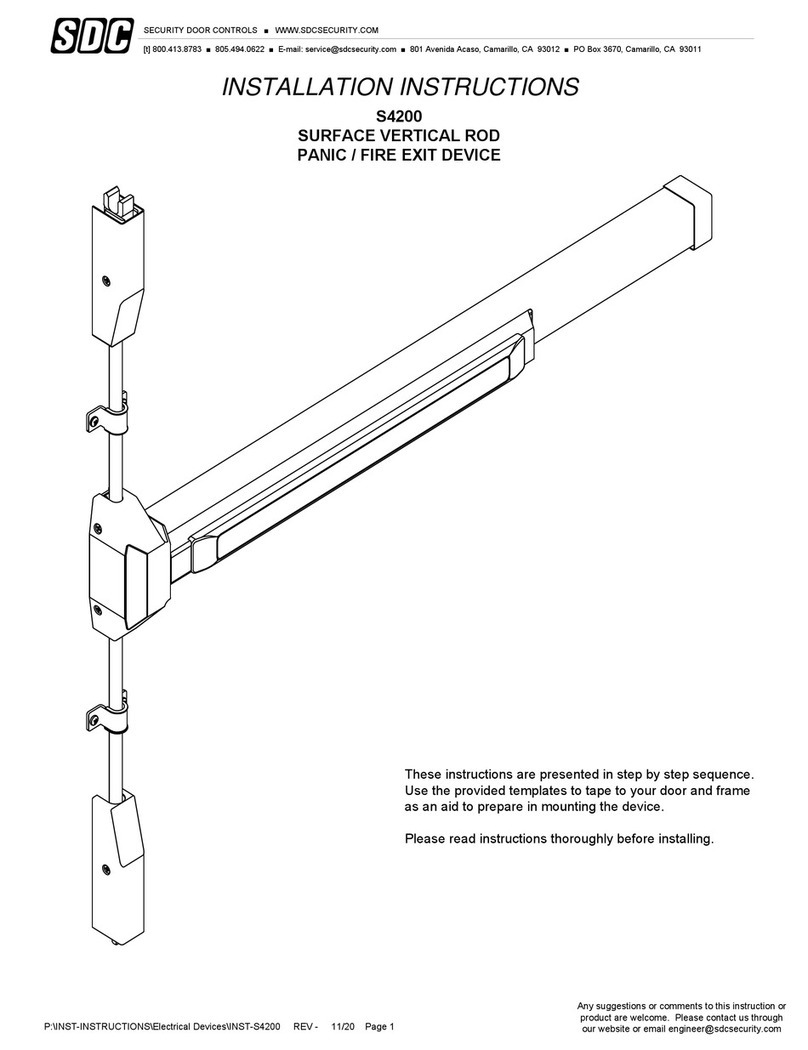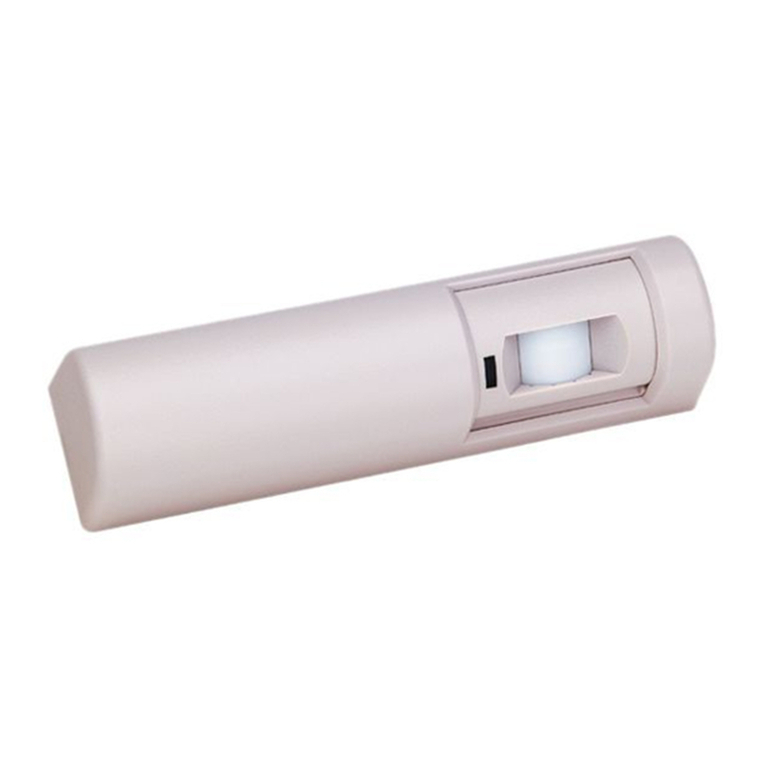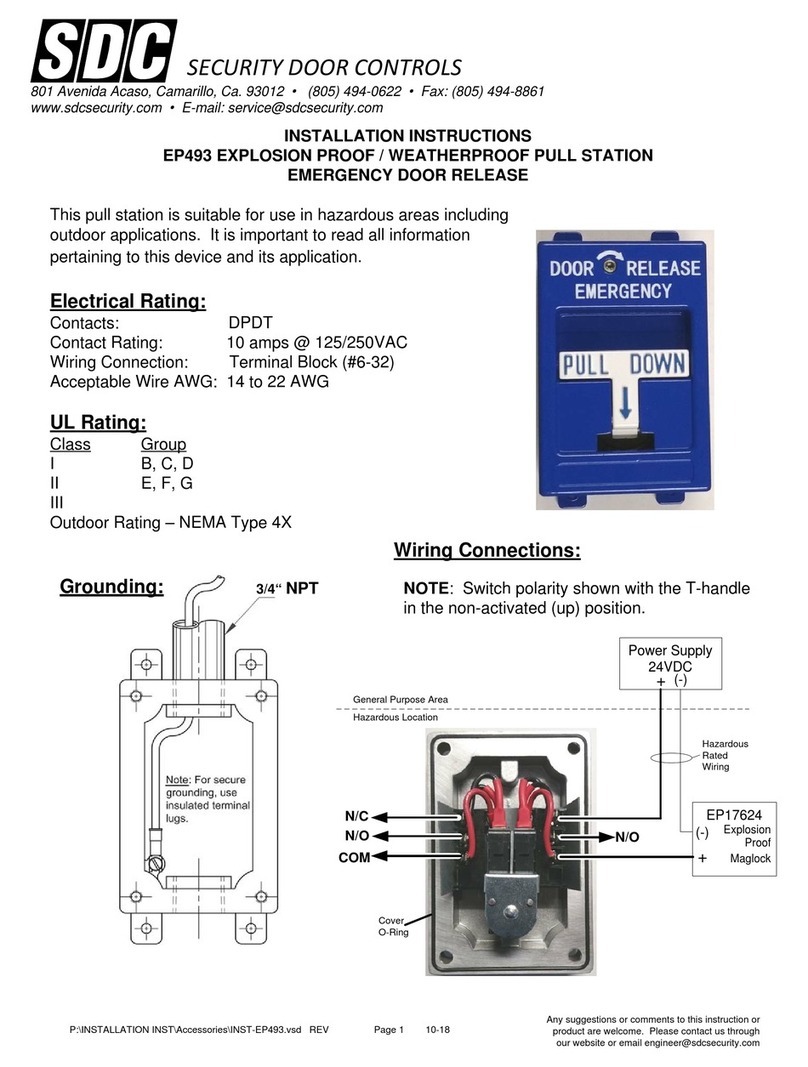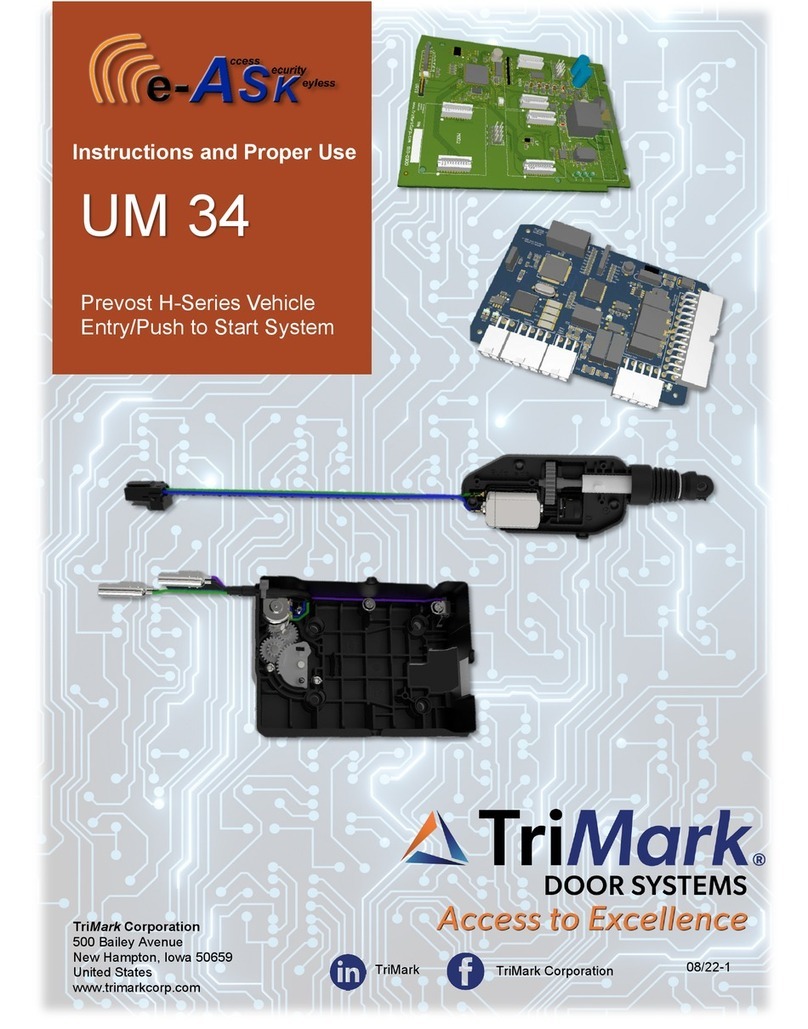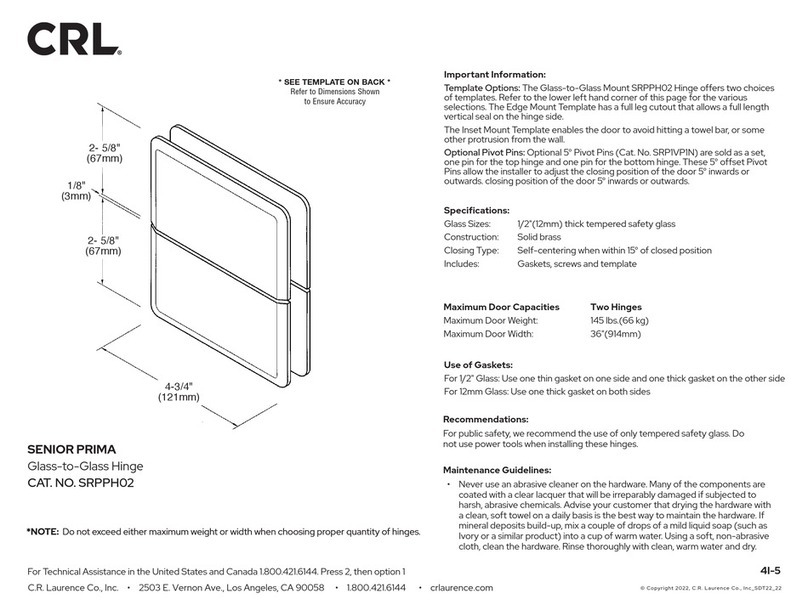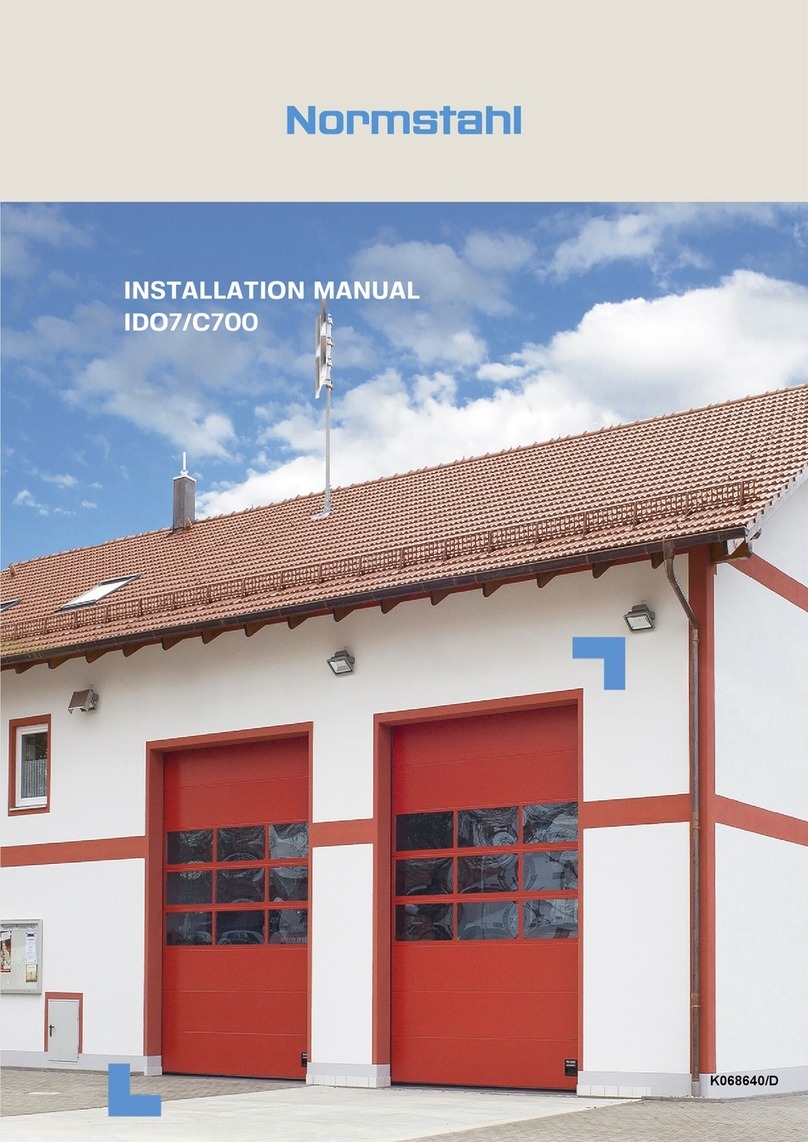
P:\INSTALLATION INST\Delayed Egress\INST-1511ST\INST-1511ST.vsd Rev G7 02-19 Page 1
INSTALLATION INSTRUCTIONS
EXIT CHECK®DELAYED EGRESS EMLOCK®
1511S / 1511T
PUSH UNTIL ALARM
SOUNDS. DOOR CAN BE
OPENED IN 15 SECONDS.
Application
When unauthorized egress is initiated, the Exit Check®delays egress through the door for a period of 15 or 30 seconds.
An integral digital countdown display and voice commands inform the person intending to exit of the seconds remaining
to unlock. Meanwhile, the person exiting must wait allowing personnel or security respond. The door unlocks after the
15 or 30 second delay period has elapsed, permitting egress. A signal from the fire/life safety system will release the
lock immediately for uninhibited egress in an emergency.
Exit Check®applications include:
Restricting the egress of patients for their own safety.
Restricting the egress of commercial center patrons for security application needs.
Controlling pedestrian traffic in transportation facilities, including airport jetways and tarmacs
California Building
Code Compliant
KEEP PUSHING. THIS DOOR
WILL OPEN IN 15 SECONDS.
ALARM WILL SOUND.
Standard Features
1650 lbs. Holding Force
15 or 30 Second Exit Delay when activated.
1 or 2 Second Nuisance Delay
75dB Alarm Tone with Digital Display & Selectable Voice
Instruction
Choice of Activation Trigger:
- Door Movement
- Exit Device w/ REX Switch
- Touch Sense Bar w/REX Switch
Auto Power-Up – Occurs when power is restored and/or
the fire panel is restored. (When Allowed by Code)
Manual Power-Up – This is a UBC & California Building
Code Compliant Feature – Only after power restoration
and fire panel reset may the lock be reset manually at the
opening. Lock can be reset with the built-in reset key
switch or, a key switch or keypad adjacent to the door.
Vandal resistant Proximity Sensor Trigger
Auto Sensing 12/24VDC input power
Connection for Tandem Option (Pairs of Doors)
Optional Features
D = DPS Door Position Switch
B = BAS Bond Alert Sensor
A = ATS Anti Tamper Switch
E= Energy Saver Option (1200 lb. Holding Force)
Building & Fire Life Safety Code Compliant
IBC International Building Code
IFC International Fire Code
NFPA 101 Life Safety Code
NFPA 1, UFC, Uniform Fire Code
UBC Uniform Building Code
CBC California Building Code
SBC Standard Building Code
BOCA National Building Code compliant
Chicago Building Code compliant
GWXT, GWXT7 - Auxiliary Locks - UL,cUL Listed
FWAX - Special Locking Arrangements - UL Listed
California State
Fire Marshal Listed
CSFM #3774-0324:103
Only the 1511S and the 1511T
have been UL listed as Special
Locking Arrangements to UL
Standard 294, and NFPA 101.
801 Avenida Acaso, Camarillo, Ca. 93012 • (805) 494-0622 •
www.sdcsecurity.com • E-mail: service@sdcsecurity.com





